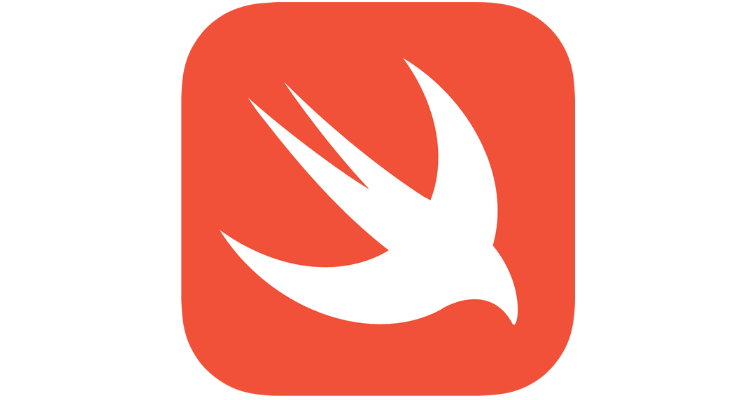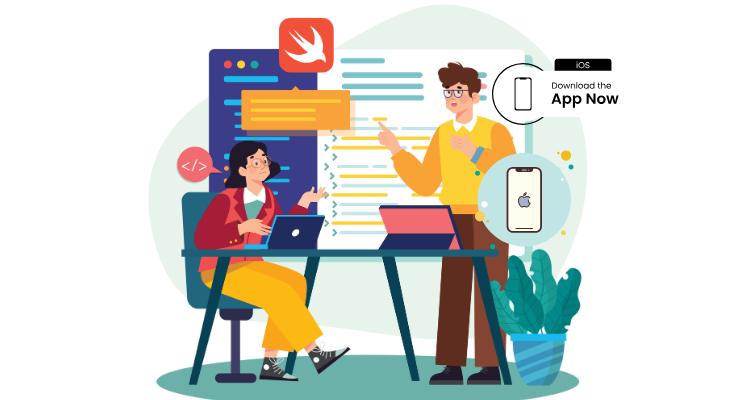Building an iOS app today is less about “just coding screens” and more about orchestrating product strategy, design systems, platform constraints, cloud reliability, privacy, and a release cadence your team can sustain.
If you’re early in that journey, it’s helpful to anchor on the collaboration itself: the right swift app development company will make your product easier to plan, faster to ship, and simpler to evolve, without forcing you into a one-size-fits-all process.
Table of Contents
ToggleWhy Swift still leads for iOS

Swift continues to be the most expressive and future-proof way to deliver first-class iOS experiences. You get native performance, tight integration with Apple frameworks, and evolving language features such as structured concurrency (async/await) that make code safer and easier to reason about.
A mature team uses SwiftUI where it fits (rapid UI, accessibility, consistency) and UIKit where needed (fine-grained control, legacy interop).
Done well, you gain speed without sacrificing quality: fewer footguns, clearer data flow, and testable business logic that won’t crumble when iOS 19 ships.
Native vs. cross-platform—making the right call
| Factor | Native (Swift for iOS) | Cross-Platform Tools |
|---|
| Performance | Best for low-latency apps, advanced animations, deep hardware use (camera, Bluetooth) | Good, but may struggle with high-performance or hardware-heavy needs |
| Platform Features | Full access to iOS-specific features like Live Activities, App Intents | Limited or slower adoption of new platform-specific features |
| Development Speed | Slower for multiple platforms (separate codebases) | Faster—single codebase works across iOS and Android |
| Budget & Timeline | Higher upfront costs and longer timelines | Cost-effective, especially when budgets are tight or deadlines are short |
| Flexibility | Tailored for iOS, strong UX consistency | Broader reach across platforms with some UX compromises |
| Scalability & Roadmap | Strong for long-term, feature-rich apps | Useful for MVPs, startups, or when testing multiple markets |
| Best Use Case | Apps requiring peak performance and deep iOS integration | Apps needing quick launch, wide audience, or budget efficiency |
| Hybrid Approach | Swift for UI + shared logic outside UI layer (best of both worlds) | Same logic can be shared, UI adapted per platform |
What senior Swift teams actually do

Experienced teams make complexity legible. You’ll see clear boundaries between presentation and domain code, predictable data flow (e.g., unidirectional patterns), and pragmatic use of Swift concurrency rather than sprawling callback forests.
They invest in unit tests for business rules, snapshot tests for key UI states, and lightweight UI automation for critical flows like login and checkout.
Dependency injection keeps modules testable, feature flags decouple deployment from launch announcements, and a small design-token system ensures visual consistency across screens. The output isn’t flashy architecture diagrams—it’s calm velocity.
Security and privacy by design
Trust is a feature. Your partner should propose reasonable defaults: Keychain for secrets, on-device encryption of sensitive caches, background task policies that don’t leak data, and consistent handling of PII across analytics, logs, and crash reports.
For payments, SCA flows and proper tokenization matter; for healthcare or finance, you’ll want documented data retention policies and verifiable controls. Mature teams also plan for Apple’s evolving privacy rules (e.g., tracking transparency, privacy manifests) so releases aren’t derailed when guidelines change.
Performance and UX that feel “instant”
Perceived speed is a product choice. Senior iOS engineers budget for cold start, cut main-thread work with background decoding, and apply lazy loading to image-heavy feeds.
They profile early with Instruments, keep allocations predictable on older devices, and design graceful fallbacks for spotty networks.
On the UX side, micro-interactions and haptics provide clarity, not decoration. Empty states tell users what to do next; error states propose a fix rather than a shrug.
Accessibility and global readiness
Accessible design helps everyone. SwiftUI and UIKit both offer solid accessibility APIs—labels, traits, rotor actions, Dynamic Type, VoiceOver testing.
Expect text to reflow, tap targets to scale, and animations to respect reduced-motion settings. If your app has global ambitions, agree up front on localization strategy, date/number formats, right-to-left layouts, and pluralization rules. Small choices here prevent expensive rework later.
Cloud, data, and integrations
Most useful apps live on a network. A strong Swift team is fluent in the wider stack—REST/GraphQL, WebSockets, background sync, offline-first strategies, and conflict resolution.
They know when to choose URLSession vs. third-party layers, how to paginate reliably, and how to protect APIs with signed requests.
For infrastructure, mainstream choices (AWS, GCP, Azure) and services like Firebase are common; for features such as maps, payments, auth, and analytics, expect familiarity with trusted brands (MapKit, Stripe, Sign in with Apple, App Store Analytics) rather than a tangle of niche SDKs.
Planning that reduces risk
Up-front planning should be lightweight and concrete. You want a small, testable scope for the first release, with measurable outcomes, activation rate, task completion time, crash-free sessions, or a specific revenue milestone. Timeboxes beat date promises without context.
A healthy plan calls out “known unknowns” (e.g., OS-level limitations, third-party dependency risks) and sets aside slack to handle them. Velocity comes from removing surprises, not ignoring them.
A one-page brief that actually helps
Here’s a compact structure many product teams find useful before kicking off work:
- Target users and jobs-to-be-done: who, and what problem they fix every week
- Must-have journeys: three end-to-end flows you can demo to a stranger
- Out-of-scope items: ideas you’ll explicitly skip in v1
- Device support: minimum iOS version and models to test on
- Data rules: what you store, for how long, and why
- Success metrics: numbers you can check two weeks after launch
- Release cadence: weekly betas, monthly App Store updates, or both
- Ownership plan: who fixes crashes, who triages feedback, who approves hotfixes
Keep it to a page. The goal is alignment, not ceremony.
How to evaluate a partner before you sign
Look for signals that survive the sales call. Code samples (even redacted) show naming, layering, and tests. A portfolio tells you more when paired with a story: what changed after launch, which trade-offs they made, what they’d do differently now.
Ask how they monitor releases, what “done” means for them, and how they respond to “unknown unknowns.” References help, but so does a small paid pilot with real stakes: one feature, one sprint, one demo to end users.
For many startups and enterprises, partnering with a trusted mobile app development company provides that balance of technical depth and pragmatic delivery needed to validate these signals before fully committing.
The pilot that proves fit
A good pilot mimics reality. Ship a narrow vertical slice—a sign-in flow with analytics and error handling, or a purchase path with receipts and refunds. Measure build times, crash rate, and how quickly feedback turns into fixes. Watch meetings: are decisions recorded, or lost in chat threads? Do designers get realistic constraints early? Are estimates revised when facts change? You’re testing collaboration, not just compilation.
Shipping like a habit
Releases should feel routine. You’ll want a CI/CD setup that runs tests, lints code, builds for TestFlight, and posts notes where your team lives. Feature flags let you merge safely; phased rollout and instant rollback protect users when surprises slip through.
After each release, collect a short digest: crashes, churn, key metrics, and one or two small bets for the next build. Consistency beats heroics.
Ownership after launch
Great partners plan for their own obsolescence. That means clear documentation, sensible repo structure, and decisions captured where future maintainers will look.
Expect a handoff checklist: account access, certificates and keys, build scripts, release steps, and a backlog annotated with context. If you keep working together, that’s because it’s useful—not because you’re locked in.
Budgeting without guesswork
Budgets go sideways when teams chase vague scope with fixed dates. A better pattern pairs a fixed budget for a fixed timebox (say, eight weeks) with a flexible backlog ordered by impact. You still get a realistic release date, but the content adapts as reality changes. If you must give a fixed scope and date, insist on a risk buffer and be explicit about what drops if new constraints appear.
Common pitfalls—and how to avoid them
- Over-architecting too early. Choose patterns that fit the problem you have, not the one you fear.
- Under-investing in testing. A handful of high-value tests pay for themselves the first time a refactor lands.
- Ignoring accessibility. Retrofits are expensive and never as good as building in support from day one.
- SDK sprawl. Each dependency adds crash surface, privacy work, and update friction; prefer fewer, better libraries.
- Metric blindness. If you can’t see activation, retention, and crash trends, you’re flying by vibes.
What success feels like
You’ll know a healthy collaboration by the calm in your release process and the clarity of your next steps. The backlog shrinks in uncertainty, not just in items. Designers and engineers speak the same constraints.
Stakeholders hear “we tried X, here’s what happened, here’s what we’re doing next” rather than “we’re still working on it.” Most of all, users complete key tasks without friction—and you can prove it.
Bringing it all together
Choosing a Swift partner is less about headlines and more about habits: testable slices, honest trade-offs, accessible experiences, and steady releases that compound.
If your evaluation centers on these fundamentals, you’ll ship faster now and pay less later, because each change arrives on a codebase that welcomes it.
For a tangible reference as you build your shortlist, review how Clover Dynamics communicates discovery, architecture, and handoff practices within an outcome-focused engagement model that teams can actually sustain.









